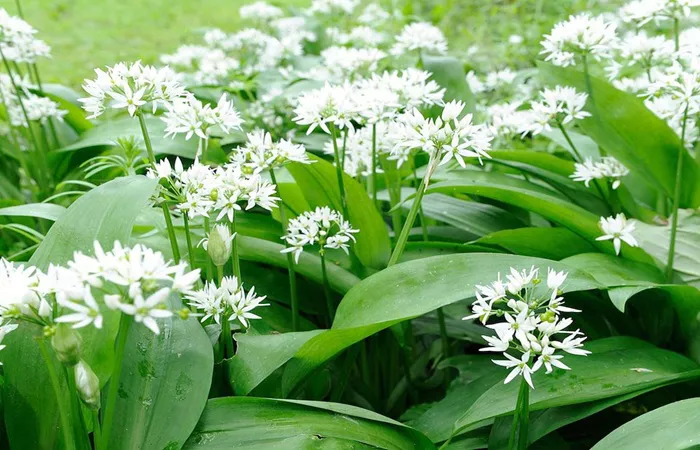Wild garlic, also known as Allium ursinum, is a fascinating plant that not only adds flavor to culinary dishes but also boasts beautiful and unique flowers. If you’ve ever wandered through a woodland or meadow and caught a whiff of a garlic-like scent, chances are you were near wild garlic. In this article, we’ll explore what wild garlic flowers look like, their botanical characteristics, and their significance in nature and culture.
The Botanical Background of Wild Garlic
What Is Wild Garlic?
Wild garlic is a perennial plant that belongs to the Allium genus, which includes onions, leeks, and chives. It is native to Europe and Asia but has spread to other parts of the world due to its adaptability and culinary uses. The plant thrives in moist, shaded areas, such as woodlands and riverbanks.
Growth Habits
Wild garlic grows from bulbs and typically reaches a height of 30-50 cm. Its leaves are broad, lance-shaped, and emit a strong garlic odor when crushed. The plant blooms in spring, usually between April and June, depending on the climate.
The Appearance of Wild Garlic Flowers
Flower Structure
Wild garlic flowers are small and star-shaped, arranged in a loose cluster called an umbel. Each umbel can contain 10-20 individual flowers. The flowers have six petals, which are usually white but can sometimes have a slight pink or green tint.
Color and Texture
The flowers are predominantly white, giving them a delicate and pure appearance. The petals are smooth and slightly translucent, allowing light to pass through them, which enhances their beauty in natural sunlight.
Size and Shape
Each flower is about 1-2 cm in diameter, with petals that are narrow and pointed. The overall shape of the umbel is spherical, creating a striking visual effect when viewed from a distance.
The Lifecycle of Wild Garlic Flowers
Blooming Period
Wild garlic flowers bloom in spring, typically from April to June. The blooming period lasts for about 2-3 weeks, during which the plant attracts pollinators like bees and butterflies.
Pollination and Seed Formation
After pollination, the flowers develop into seed pods. Each pod contains several small, black seeds that are dispersed by wind or animals. The seeds germinate in the following spring, continuing the plant’s lifecycle.
Ecological Significance of Wild Garlic Flowers
Role in the Ecosystem
Wild garlic flowers play a crucial role in their ecosystem. They provide nectar and pollen for pollinators, supporting biodiversity. Additionally, the plant’s strong scent deters herbivores, protecting it from being eaten.
Soil Enrichment
Wild garlic has a symbiotic relationship with soil fungi, which helps improve soil quality. The plant’s decomposing leaves also add organic matter to the soil, enriching it for other plants.
Cultural and Culinary Uses of Wild Garlic
Culinary Applications
Wild garlic is widely used in cooking, particularly in European cuisines. The leaves, flowers, and bulbs are all edible and can be used in salads, soups, and pesto. The flowers add a mild garlic flavor and a decorative touch to dishes.
Medicinal Properties
Wild garlic has been used in traditional medicine for centuries. It is believed to have antibacterial, antiviral, and anti-inflammatory properties. The plant is also rich in vitamins and minerals, making it a healthy addition to the diet.
Symbolism
In folklore, wild garlic is associated with protection and purification. It was often hung in homes to ward off evil spirits and diseases. The plant’s strong scent was thought to cleanse the air and promote health.
How to Identify Wild Garlic Flowers
Key Features
- Leaves: Broad, lance-shaped, and emit a strong garlic odor when crushed.
- Flowers: Small, star-shaped, white, arranged in a spherical umbel.
- Height: 30-50 cm tall.
- Habitat: Moist, shaded areas like woodlands and riverbanks.
- Similar Plants
Wild garlic can be confused with other plants, such as lily of the valley (Convallaria majalis), which is toxic. However, lily of the valley has bell-shaped flowers and lacks the garlic odor.
Conclusion
Wild garlic flowers are a beautiful and ecologically important part of the natural world. Their delicate white petals and spherical umbels make them a joy to behold, while their strong garlic scent adds a unique touch to the environment. Whether you’re a botanist, a chef, or simply a nature enthusiast, wild garlic flowers offer something for everyone.


